Tutor Lesson
Tutoring sessions with Ms. D. encompass the principals of Reading Recovery, developed by Marie Clay of New Zealand. Reading Recovery is a highly effective one on one early literacy program that uses some of the same principals you will find in your Montessori schools as well as home school environments. Reading Recovery utilizes and builds upon genuine conversations between teacher and child as the primary basis of instruction. This teacher-child dialogue has been found to be an effective method for teachers to help students learn to deal with complex tasks such as reading. The Reading Recovery lesson follows a strict routine of components containing activities that are molded to meet the individual needs of each child based upon a daily analysis of student progress by the teacher. Strategies taught in the lesson will go far in extending a child's self extending system of problem solving plans and can be used on going through out a child's education making them life long learners as well as producers of information and not just consumers of information. Lessons are geared to the individual child and their needs, what they know and what they do not know, at a child's own pace, much like you find in a Montessori school or home school setting.
A typical 30-minute lesson has several components:
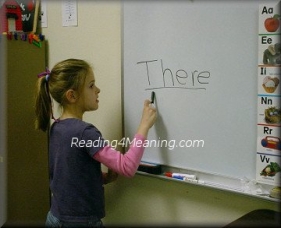
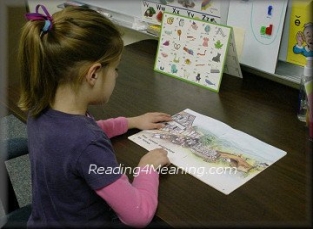
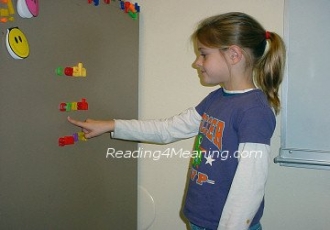
1. Before the reading tutoring lesson begins, the student practices fluent writing of one or more High Frequency words, or letters, on the chalk/dry erase board.
2. The reading tutor child rereads several familiar books, and then rereads a book introduced in the prior reading recovery lesson while the reading teacher does a running record (observes and records the child's reading behaviors). The reading teacher chooses 2-3 powerful teaching points.
3. The child is guided toward discovering how words work through developing letter knowledge and word structure awareness and familiarity in each reading tutor lesson. This is a powerful confidence builder when
children can discover and use their reading strategies to advance their reading knowledge and comprehension skills, whether it is for learning how to read or for TAKS testing tutoring and strategy building in a private one on one tutor session. When children learn to read, they are free to read to learn. When they are able to read to learn, then the TAKS test will be a breeze, as they will learn to take the TAKS test and other objective type test skills in the private tutor session.
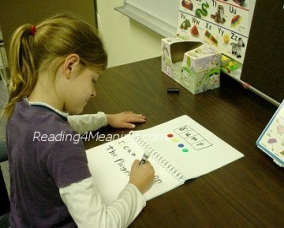
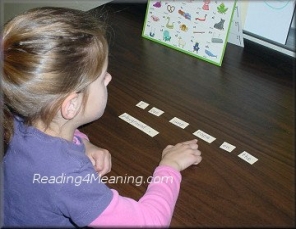
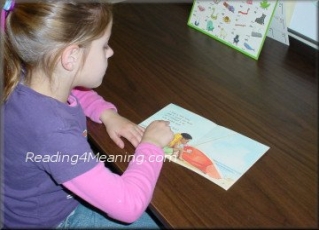
4. The child writes a story with the teacher providing opportunities for him/her to hear and record sounds in words.
5. The child rearranges his/her story from a cut-up sentence strip provided by the teacher.
6. The teacher introduces a new book carefully selected for its learning opportunities, and the child reads the new book orchestrating his/her current problem-solving strategies.
Strategies to look for: More Advanced Strategies Cues:
* Directional movement * Checking on oneself or self-monitoring * Meaning - through pictures and story line
* One-to-one matching * Cross-checking on information * Structure - syntactically appropriate
* Locating known words * Searching for cues * Visual - letter sounds, chunks (familar families),
* Locating an unknown word * Self-correction &
nbsp; prefixes & suffixes
University professors (Trainers of Teacher Leaders) train Teacher Leaders who in turn train Teachers in the Reading Recovery teaching techniques. Experienced teachers are provided professional development in a year long curriculum that integrates theory and practice and is characterized by intensive interaction with colleagues. Teachers-in-training conduct lessons "Behind the glass" and are observed and given feedback by their colleagues. In addition, Reading Recovery teacher leaders visit teachers at their schools and help them critique and improve their teaching and observation skills. All teachers involved in Reading Recovery; Teacher Trainers, Teacher Leaders as well as Reading Recovery Teachers are required to have students.
TERMINOLOGY
The Observation Survey contains six measures of a child's attempts on reading and writing tasks and provides information about what the child knows and can control in his/her learning. The components of the survey are:
* 1. Letter Identification - a list of 54 different characters including upper and lower case letters and the extra forms of a and g.
* 2. Word Test - a list of 20 words most frequently used in early reading materials.
* 3. Concepts about Print - a variety of tasks related to book reading, familiarity with books, and specific concepts about printed language.
* 4. Writing Vocabulary - children are given an opportunity to write all of the words they know in ten minutes.
* 5. Dictation Test - a story is read to the child who writes the words using sound analysis.
* 6. Text Reading Level - a determination of reading level based on actual books organized by a gradient of difficulty.
Roaming Around the Known refers to the first two weeks of a child's program in which the teacher explores the child's known set of information and helps establish a working relationship, boost the child's confidence, and share some reading and writing opportunities.
Running Records are a systematic notation system of the teachers observations of the child's processing of new text.
Discontinued refers to the decision to exit a child from the program based upon the readministered Observation Survey scores. Also observations of the strategies used by the child during reading and writing. Regular classroom performance is also taken into consideration.
Program Children are those who received sixty or more lessons or who were successfully discontinued from the program prior to having received sixty lessons.
Continuing Contact refers to inservice training provided after the initial training year. All RR teachers meet approximately once a month to observe and critique "Behind the Glass" lessons and to further their knowledge and understanding of Reading Recovery aspects.
"Behind the Glass" refers to teaching an actual lesson while being observed by peers through a one-way glass.
Reading Recovery is an early intervention program designed by Marie M. Clay of New Zealand to serve children in first grade who are having difficulty learning to read and write. I have been able to use my training and experience as a Reading Recovery teacher to help students of all ages with a focus on preschool, kindergarten, first graders, second grade as well as third grade and beyond! 1 to 1 helps greatly to increase confidence and self esteem.
~ Thanks to
Darby, who was kind enough to demonstrate the Reading Recovery lesson in the photos above. Darby is also a tutor student who graduated from the program in the spring of 2004. Photos were taken and included on this site with express written permission by tutor parents. ~
All photos, images, and text included on this site are copyrighted by Reading4Meaning.com, and are NOT to be used without express written permission.
© Reading4Meaning.com 1998-2013